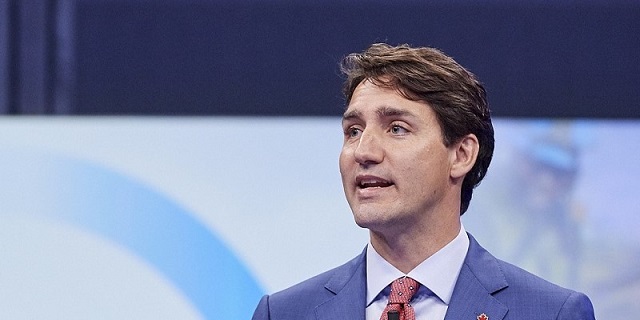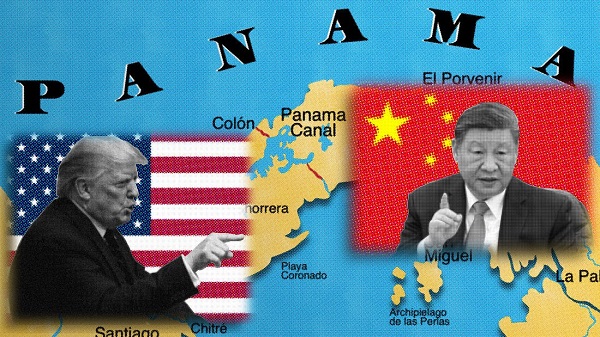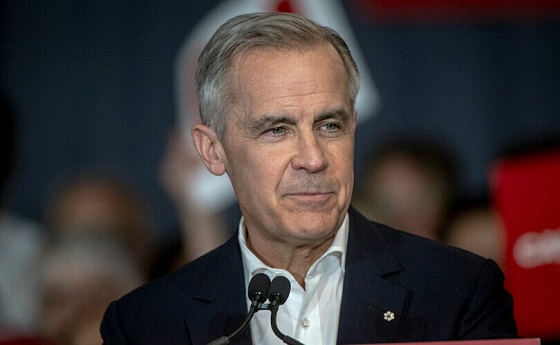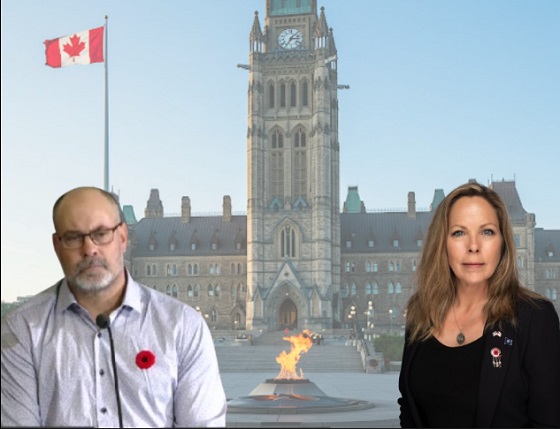Business
Federal budget fails to ‘break the glass’ on Canada’s economic growth crisis

From the Fraser Institute
By Grady Munro and Jake Fuss
“You’ve seen those signs that say, ‘In emergency, break glass.’ Well, it’s time to break the glass,” said Carolyn Rogers, Bank of Canada senior deputy governor, in a speech last month while warning that Canadians may see living standards fall if nothing is done to promote economic growth.
In advance of the Trudeau government’s 2024 budget released on Tuesday, many called for the government to finally address Canada’s stagnant economic growth. But despite the growing consensus that this issue represents a national crisis, the Trudeau government simply continued with the same approach that helped get us to this point in the first place.
“You’ve seen those signs that say, ‘In emergency, break glass.’ Well, it’s time to break the glass,” said Carolyn Rogers, Bank of Canada senior deputy governor, in a speech last month while warning that Canadians may see living standards fall if nothing is done to promote economic growth.
Ten days later in a joint interview, former Quebec premier Jean Charest and former federal finance minister Bill Morneau urged the Trudeau government to focus on economic growth in the budget. Specifically, Morneau suggested Canada needs more business investment “from other sources than the government.”
These are just two examples of the growing consensus that Canada is suffering an economic and productivity growth crisis.
Economic growth generally refers to the increase in gross domestic product (GDP), which measures the total output of the economy and is driven by three factors—the labour supply, the capital stock and the efficiency in which labour and capital are used.
Canada’s GDP growth in recent years has been driven almost entirely by the labour supply, as the country has experienced historically high population growth. However, although GDP in aggregate has been growing, GDP per person (a common indicator of living standards) has been declining at an alarming rate. Since the second quarter of 2022 (when it peaked post-COVID), inflation-adjusted GDP per person has fallen from $60,178 to $58,111 in the fourth quarter of 2023—and has declined during five of those six quarters, and now sits below where it was at the end of 2014.
Labour productivity, which is the amount of output (GDP) produced per hour worked, has seen a similar decline. Statistics Canada recently reported that the fourth quarter of 2023 represented the first time productivity increased since the beginning of 2022, and that for the prior six quarters labour productivity had declined or remained stagnant.
The consequence of both declining GDP per person and lower productivity, as Carolyn Rogers warned, is a lower standard of living for Canadians. To reverse this crisis, the Trudeau government must address the cause of Canada’s weak economic growth—a severe lack of business investment.
Business investment provides the capital needed to equip workers with the technology and equipment to become more efficient and productive. Yet according to a recent study, from 2014 to 2021, inflation-adjusted business investment per worker in Canada fell from $18,363 to $14,687.
This decline in business investment is partly the result of the Trudeau government’s disinterest in encouraging entrepreneurship and private-sector business investment. Indeed, the government’s approach of high spending, more regulation and significant involvement in the economy has done little to foster widespread economic growth.
And by raising capital gains taxes on individuals and businesses, which the Trudeau government did in this latest budget, in the words of former Bank of Canada governor David Dodge, the government is doing “exactly the wrong thing” to boost productivity. Rather, these measures simply provide more reason for people and businesses to invest elsewhere.
This latest Trudeau budget doubles down on a failed approach. Spending is up, government involvement in the economy is increasing, and increased capital gains taxes will only make our investment challenges more difficult. We need a complete reversal in policy to solve our economic growth crisis.
Authors:
Business
Trump demands free passage for American ships through Panama, Suez

 MxM News
MxM News
Quick Hit:
President Donald Trump is pushing for U.S. ships to transit the Panama and Suez canals without paying tolls, arguing the waterways would not exist without America.
Key Details:
-
In a Saturday Truth Social post, Trump said, “American Ships, both Military and Commercial, should be allowed to travel, free of charge, through the Panama and Suez Canals! Those Canals would not exist without the United States of America.”
-
Trump directed Secretary of State Marco Rubio to “immediately take care of, and memorialize” the issue, signaling a potential new diplomatic initiative with Panama and Egypt.
-
The Panama Canal generated about $3.3 billion in toll revenue in fiscal 2023, while the Suez Canal posted a record $9.4 billion. U.S. vessels account for roughly 70% of Panama Canal traffic, according to government figures.
Diving Deeper:
President Donald Trump is pressing for American ships to receive free passage through two of the world’s most critical shipping lanes—the Panama and Suez canals—a move he argues would recognize the United States’ historic role in making both waterways possible. In a post shared Saturday on Truth Social, Trump wrote, “American Ships, both Military and Commercial, should be allowed to travel, free of charge, through the Panama and Suez Canals! Those Canals would not exist without the United States of America.”
— Rapid Response 47 (@RapidResponse47) April 26, 2025
Trump added that he has instructed Secretary of State Marco Rubio to “immediately take care of, and memorialize” the situation. His comments, first reported by FactSet, come as U.S. companies face rising shipping costs, with tolls for major vessels ranging from $200,000 to over $500,000 per Panama Canal crossing, based on canal authority schedules.
The Suez Canal, operated by Egypt, reportedly saw record revenues of $9.4 billion in 2023, largely driven by American and European shipping amid ongoing Red Sea instability. After a surge in attacks by Houthi militants on commercial ships earlier this year, Trump authorized a sustained military campaign targeting missile and drone sites in northern Yemen. The Pentagon said the strikes were part of an effort to “permanently restore freedom of navigation” for global shipping near the Suez Canal.
Trump has framed the military operations as part of a broader strategy to counter Iranian-backed destabilization efforts across the Middle East.
Meanwhile, in Central America, Trump’s administration is working to counter Chinese influence near the Panama Canal. On April 9th, Defense Secretary Pete Hegseth announced an expanded partnership with Panama to bolster canal security, including a memorandum of understanding allowing U.S. warships and support vessels to move “first and free” through the canal. “The Panama Canal is key terrain that must be secured by Panama, with America, and not China,” Hegseth emphasized during a press conference in Panama City.
American commercial shipping has long depended on the canal, which reduces the shipping route between the U.S. East Coast and Asia by nearly 8,000 miles. About 40% of all U.S. container traffic uses the Panama Canal annually, according to the U.S. Maritime Administration.
The United States originally constructed and controlled the Panama Canal following a monumental effort championed by President Theodore Roosevelt in the early 20th century. After backing Panama’s independence from Colombia in 1903, the U.S. secured the rights to build and operate the canal, which opened in 1914. Although U.S. control ended in 1999 under the Torrijos-Carter Treaties, the canal remains vital to U.S. trade.
2025 Federal Election
Columnist warns Carney Liberals will consider a home equity tax on primary residences

From LifeSiteNews
The Liberals paid a group called Generation Squeeze, led by activist Paul Kershaw, to study how the government could tap into Canadians’ home equity — including their primary residences.
Winnipeg Sun Columnist Kevin Klein is sounding the alarm there is substantial evidence the Carney Liberal Party is considering implementing a home equity tax on Canadians’ primary residences as a potential huge source of funds to bring down the massive national debt their spending created.
Klein wrote in his April 23 column and stated in his accompanying video presentation:
The Canada Mortgage and Housing Corporation (CMHC) — a federal Crown corporation — has investigated the possibility of a home equity tax on more than one occasion, using taxpayer dollars to fund that research. This was not backroom speculation. It was real, documented work.
The Liberals paid a group called Generation Squeeze, led by activist Paul Kershaw, to study how the government could tap into Canadians’ home equity — including their primary residences.
Kershaw, by the way, believes homeowners are “lottery winners” who didn’t earn their wealth but lucked into it. That’s the ideology being advanced to the highest levels of government.
It didn’t stop there. These proposals were presented directly to federal cabinet ministers. That’s on record, and most of those same ministers are now part of Mark Carney’s team as he positions himself as the Liberals’ next leader.
Watch below Klein’s 7-minute, impassionate warning to Canadians about this looming major new tax should the Liberals win Monday’s election.
Klein further adds:
The total home equity held by Canadians is over $4.7 trillion. It’s the largest pool of private wealth in the country. For millions of Canadians — especially baby boomers — it’s the only retirement fund they have. They don’t have big pensions. They have a paid-off house and a hope that it will carry them through their later years. Yet, that’s what Ottawa has quietly been circling.
The Canadian Taxpayer’s Federation has researched this issue and published a report on the alarming amount of new taxation a homeowner equity tax could cost Canadians who sell their homes that have increased in value over the years they have lived in it. It is a shocker!
A Google search on the question, “what is a home equity tax?” returns the response:
A home equity tax, simply put, it’s a proposed levy on the increased value of your home, specifically, on your principal residence. The idea is for Government to raise money by taxing wealth accumulation from rising property values.
The Canadian Taxpayers Federation has provided a Home Equity Tax Calculator Backgrounder to help Canadians understand what the impact of three different types of Home Equity Tax Calculators would have on home owners. The required tax payment resulting from all three is a shocker.
Keep in mind that World Economic Forum policies intend to eventually eliminate all private home ownership and have the state own and control not only all residences, but also eliminate car ownership, and control when and where you may live and travel.
Carney, Trudeau and several other members of the Liberal government in key positions are heavily connected to the WEF.
-

 Alberta2 days ago
Alberta2 days agoGovernments in Alberta should spur homebuilding amid population explosion
-

 Alberta2 days ago
Alberta2 days agoLow oil prices could have big consequences for Alberta’s finances
-

 International2 days ago
International2 days agoHistory in the making? Trump, Zelensky hold meeting about Ukraine war in Vatican ahead of Francis’ funeral
-

 Business2 days ago
Business2 days agoIt Took Trump To Get Canada Serious About Free Trade With Itself
-

 2025 Federal Election2 days ago
2025 Federal Election2 days agoCarney’s budget is worse than Trudeau’s
-

 C2C Journal2 days ago
C2C Journal2 days ago“Freedom of Expression Should Win Every Time”: In Conversation with Freedom Convoy Trial Lawyer Lawrence Greenspon
-

 Opinion1 day ago
Opinion1 day agoCanadians Must Turn Out in Historic Numbers—Following Taiwan’s Example to Defeat PRC Election Interference
-

 2025 Federal Election19 hours ago
2025 Federal Election19 hours agoColumnist warns Carney Liberals will consider a home equity tax on primary residences









